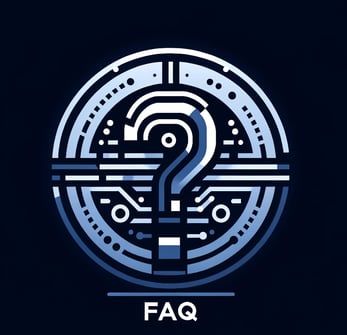Frequently Asked Questions: Your Ultimate Guide to Virtual Reality
1. What is Virtual Reality (VR)? Virtual Reality (VR) is a simulated experience that can be similar to or completely different from the real world. It is achieved through the use of computer technology, particularly VR headsets or multi-projected environments, to create immersive sensory experiences, including sight, sound, and sometimes touch.
2. How does VR work? VR works by tracking the user's head and eye movements to adjust the virtual scene accordingly, creating a convincing sense of immersion in a digital world. This is accomplished using a combination of VR hardware, including headsets, sensors, controllers, and sometimes treadmills or gloves, to provide visual, auditory, and haptic feedback.
3. What are the main uses of VR? VR is used across various sectors, including entertainment (gaming and virtual tourism), education (virtual classrooms and simulations), healthcare (surgical training and patient rehabilitation), real estate (virtual tours), and more, to create immersive experiences that can educate, entertain, and enhance our perception of digital content.
4. What do I need to start using VR? To start using VR, you'll need a VR headset, which ranges from standalone devices to ones that require a connection to a computer or console. Depending on the device, you may also need additional hardware, such as a PC with specific specs, gaming consoles, or motion sensors. A spacious and safe environment is recommended for a full-range motion experience.
5. Are there any health risks associated with VR? While VR is safe for most users, some may experience motion sickness, eye strain, or disorientation, especially during prolonged use. It's recommended to take regular breaks, adjust settings for personal comfort, and consult with a healthcare provider if you have pre-existing conditions that may be affected by VR use.
6. Can VR be used for education? Absolutely! VR offers unique opportunities for immersive learning, allowing students to explore historical sites, dissect virtual cadavers, simulate complex scientific concepts, and much more, all within a safe and controlled environment.
7. What is the difference between VR and AR? VR (Virtual Reality) creates a completely immersive digital environment, while AR (Augmented Reality) overlays digital information onto the real world. Both technologies offer unique experiences but serve different purposes and use cases.
8. How can I create VR content? Creating VR content requires specialized software and skills in 3D modeling, animation, and programming. There are platforms and tools available that simplify the creation process for beginners, such as Unity or Unreal Engine, which offer resources and communities to help get you started.
9. What is the future of VR? The future of VR is promising, with ongoing advancements in technology, hardware, and content creation. We can expect to see more realistic and immersive experiences, broader applications beyond gaming and entertainment, and more accessible VR solutions for the average consumer.
10. Where can I find VR experiences? VR experiences can be found on various platforms, depending on your device. Popular sources include SteamVR, Oculus Store, and Viveport. Many VR experiences are also available on YouTube and social media platforms, offering a glimpse into the possibilities of VR content.
For further information or specific inquiries, feel free to contact us through our website. Join us on this exciting journey through the landscape of virtual reality, where the possibilities are as limitless as your imagination.


